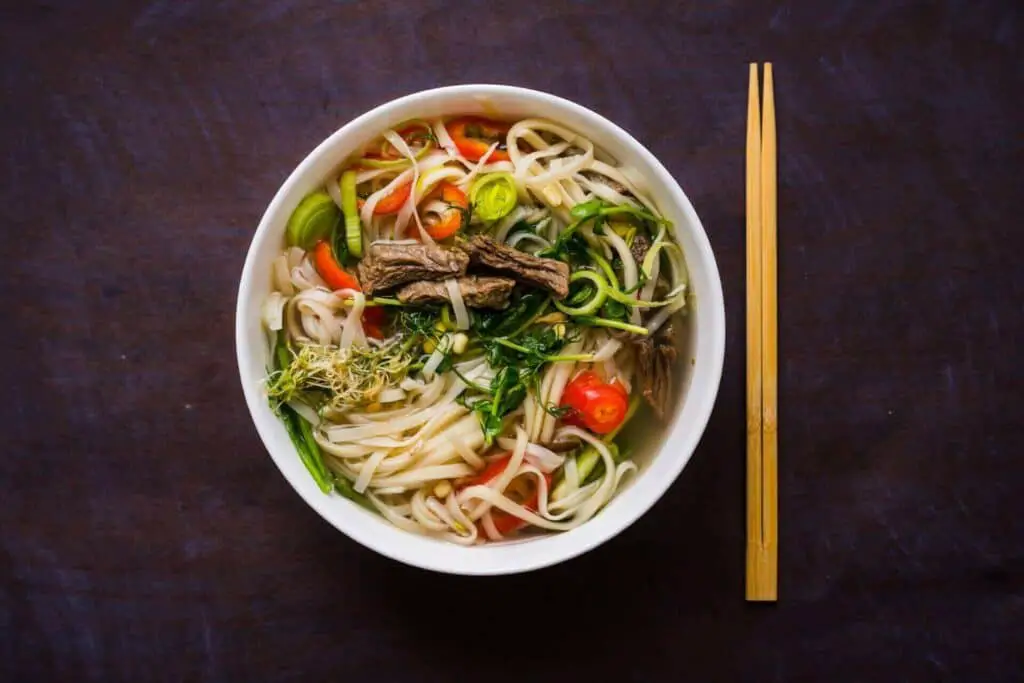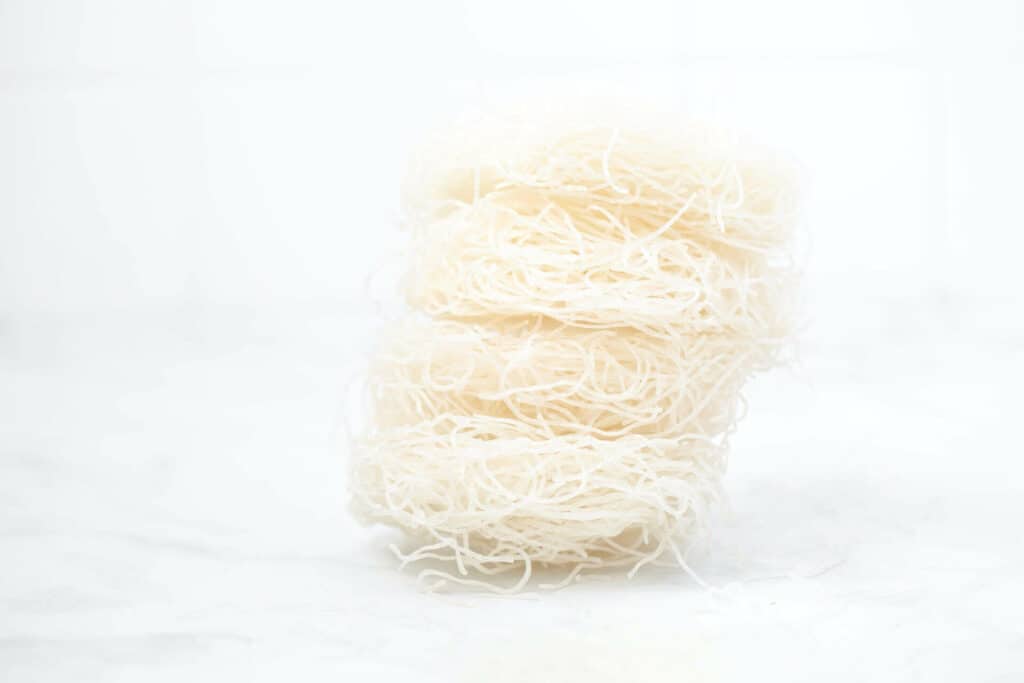Ramen is a Japanese national dish and a great way to get healthy and nutritious ingredients without sacrificing flavor. However, we often hear about its other kinds and might come to the question – what is rice ramen? We’ll take a look at this noodle dish and its nutritional value.
Rice ramen is a dish made of rice noodles. Since, traditionally, ramen is a broth-based dish with noodles made from wheat flour, salt, and eggs, we don’t know it as rice ramen. But, instead of these, you can use noodles made of rice. To prepare this, boil the noodle pack, then serve with roasted pork belly, bamboo shoots, scallion, and flavored egg. Additional toppings include nori, butter, sesame seeds, pepper flakes, and soy sauce.


What Is Rice Ramen?
Ramen has noodles because it is noodles. And while some people wonder if ramen is soup, we can confirm it’s a meal with many names and faces. What is rice ramen, though?
You’ll be glad to hear it is nothing but a pot of ramen cooked with a rice noodle pack instead of wheat. It’s not some noodle meal to which you’d add rice (although you can do so if you prefer) but just a healthier twist on the famous and beloved Japanese dish.
Jokes aside, this dish is very commonly prepared for folks who have gluten intolerance and are sensitive to any of the typical ingredients in most ramens. This dish is typically cooked with wheat noodle packs, but you can interchange them for another, healthier alternative.

What Are Rice Noodles?
Rice noodles are made from rice flour. They are often used in Asian cuisine and can be either thin or thick in size. They’re generally white or translucent in color and are softer and more fragile than other noodle types.
They can be found fresh or dry in most Asian markets. They should be cooked in boiling water for 3-5 minutes before being used in a recipe. Once cooked, they can be added to soups, stir-fries, or as a side dish. You can also cook these noodles in the microwave.
They come in various thicknesses, from thin vermicelli to thick chow mein-style noodles. They can be used in many dishes, including soups, stir-fries, and salads. When stored properly in an airtight container, they can last up to 6 months in the pantry.
Rice Noodles Are Great for People With a Gut Problem and Special Nutrition Requirements
If you want to learn why and how these noodles are better for people with sensitive stomachs and allergies, keep reading. They are:
- A good source of protein and fiber,
- Relatively low in calories,
- High in glycemic index, meaning they can cause a quick spike in blood sugar levels,
- Made from rice flour, so they do not contain gluten,
- Lower in calories and carbohydrates than wheat ones and are easy to digest.
If you’re interested in learning more about organic and vegan ingredients, you can check out Lotus Foods, its numerous millet and brown rice noodle packs and other healthy stuff. Many reviews claim each product they have is fantastic.

Product Information – Rice vs Wheat Noodle
For anyone unfamiliar with different noodle kinds, here’s a quick breakdown of rice and wheat noodle ingredients, allergens, and nutritional value. It might help you decide which type to cook and add to your dish tonight.
| Rice noodle | Wheat noodle | |
| Ingredients | Rice flour, water, salt | Wheat flour, water, salt, egg |
| Allergens | / | Wheat, egg |
| Nutrition | No cholesterol, low-fat | Rich in sodium and carbs |
| Calories | Cca. 120 per 100g | Cca. 350 per 100g |
Which Products Are Better for a Gluten-Sensitive Customer?
Say you want to make ramen seasoning, but you’re sensitive to many ingredients that typically go into it. One place where you can find excellent, healthy, and organic recipes and foods is the company called Lotus Foods.
They have a range of organic products, including organic millet and brown rice instant noodle packs. You can find a lot more on their site, or simply visit an Asian shop or market nearby where you’ll find many delicious and healthy ingredients.
Sadly, soy sauce shouldn’t be on your list if you wish to avoid gluten altogether. While some soy sauces could be prepared more consciously and healthily, soy is the ingredient that can make or break your meal.
Additionally, choose vegetable broths or miso fermented paste instead of pork or other animal-style broth. While miso is made from soy, it’s fermented and has a much lower risk of glutinous components.
Almost every fermented product is also incredibly helpful in aiding digestion and boosting the immune system.
A Recipe for Organic, Rice-Based Ramen
There are gluten-free alternatives that can be used to make a broth similar to ramen. One such alternative is rice noodles, which will be so delicious, they’ll make you research when you can eat noodles again.
To make this kind of ramen, you will need:
- Rice noodle pack,
- Vegetable broth,
- Chili oil,
- Minced ginger,
- Chopped scallions.
Here are the steps you should take:
- Bring the vegetable broth to a boil in a pot,
- Add the noodle pack and cook according to the package instructions,
- Once the noodle pack is cooked, add the soy sauce, chili oil, ginger, and scallions and stir to combine,
- Serve hot.
If You Buy a Rice Noodle Pack, Your Stomach Will Thank You
Ramen is a delicious and hearty soup that can be made healthier using a rice noodle pack instead of wheat. This dish is packed with flavor and will satisfy your hunger, despite the product swap.
Additionally, this dish will have more nutrients than usual since the noodles are a great alternative for anyone looking to enjoy their favorite foods without sacrificing much. You can try Lotus Foods’ other products since they specialize in creating healthy and organic stuff.